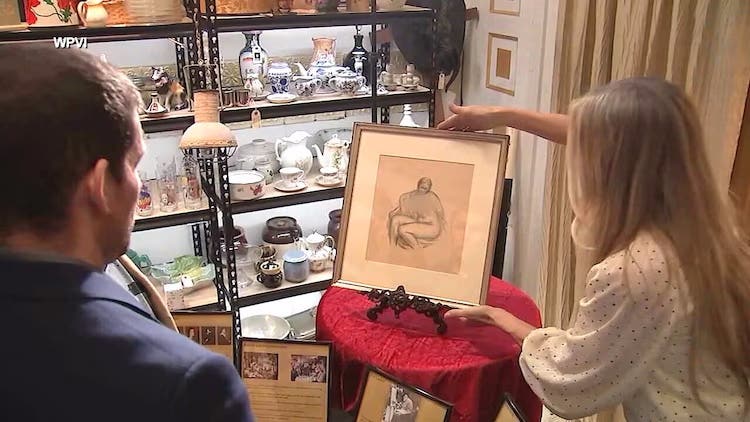Black Diamond From Outer Space Could Fetch Up to $7 Million
The 555.55-carat specimen, named ‘The Enigma,’ has been certified by Guinness World Records as the largest cut black diamond in the world, but some experts question its cosmic origins.
An out-of-this-world black diamond called one of the rarest “wonders known to humankind” is going up for auction and predicted to sell for around $7 million.
Named “The Enigma,” the 55-facet diamond, weighing 555.55 carats, is the star of a single-lot sale at Sotheby’s Dubai starting tomorrow and continuing through February 9.
Known as a carbonado diamond, it was certified as the largest cut diamond in the world in 2006 by Guinness World Records. The Gemological Institute of America and the Gübelin Gem Lab in Switzerland have also verified that it is the world’s largest fancy black natural color diamond.
"The Enigma is a marvel of rarity and size, and its brilliance and high polish are a testament to the delicate and highly skilled undertaking of diamond cutting," said Nikita Binani, Sotheby’s Jewelry Specialist and Head of Sale, London, in a press release. "This diamond has been treasured for over two decades by the owner, and the diamond itself has never been exhibited publicly or offered on the open market, so we are thrilled to have the opportunity to tell its story to the world. Its sale represents a once-in-a-lifetime opportunity to acquire one of the rarest, billion-year-old cosmic wonders known to humankind.”
In the release, Sotheby's said that a natural faceted black diamond of this size is an extremely rare occurrence, and its origins are shrouded in mystery – thought to have been created either from a meteoric impact or having emerged from a diamond-bearing asteroid that collided with Earth.
According to the catalog notes, carbonados contain traces of nitrogen and hydrogen, abundant in interstellar space, and osbornite, a mineral uniquely found in meteors. Dating from around 2.6 to 3.8 billion years ago, the age of these specimens also indicates that these diamonds are possibly not of this Earth. Today they are found exclusively in Brazil or the Central African Republic, which could add further weight to the theory that they are indeed treasures originating from interstellar space, said the auction house.
Sotheby's also noted that the diamond’s 55 facets are inspired by the Middle Eastern palm symbol, the Hamsa, associated with the number 5. It is a sign of protection and a deflection tool against the evil eye and represents blessings, power, and strength.
Although it's a fantastic selling point, some experts are skeptical of the diamond's supposed cosmic origin, including Tim McCoy, curator of the meteorite collection at the Smithsonian National Museum of Natural History. McCoy told NPR that he's not sure it came from outer space. He said that we think of outer space as an exotic place, but inner Earth is also mysterious. "We don't really know very well what the deep, deep Earth is like," McCoy said. "Every rock has a story, and we just have to know how to listen to it. And I think this is a rock that we can't quite understand its story yet. But it's going to be a really good one when someone figures it out."
The diamond is being sold with an estimate of $4 million to $7 million but without a reserve. The auction house is also accepting cryptocurrency. For more information, visit Sotheby's.








